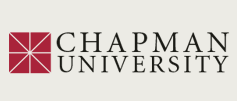Document Type
Article
Publication Date
4-1-2025
Abstract
Soil classification is essential for sustainable land management, ecological conservation, and combating desertification, particularly in arid and semi-arid regions. This study integrates hyperspectral data from the Earth Surface Mineral Dust Source Investigation (EMIT) and multispectral imagery from Sentinel-2 to achieve accurate soil classification for the Imam Turki bin Abdullah Royal Reserve (ITBA) in Saudi Arabia. Using advanced Machine Learning (ML) techniques, including Extreme Gradient Boosting (XGBoost), the study highlights the power of data fusion in addressing the limitations of standalone remote sensing methods. The integration of hyperspectral and multispectral data combines the spectral richness of hyperspectral imaging with the spatial resolution of multispectral data, providing detailed insights into the region's heterogeneous soil types. The Gram-Schmidt fusion technique enhanced spatial resolution, enabling precise identification of inter-dune soils, linear dunes, and rocky outcrops. The resulting soil classification map achieved an accuracy of 93 %, outperforming traditional methods and existing maps. Inter-dune soils, characterized by their loamy-skeletal texture and superior moisture retention, were identified as critical for supporting vegetation and afforestation efforts. This research also developed a suitability map for afforestation by incorporating weighted overlays of soil fertility, moisture retention, and vegetation indices. These findings directly contribute to global biodiversity priorities, supporting the Convention on Biological Diversity (CBD) and the associated Global Biodiversity Framework (GBF) targets such as reducing biodiversity loss (Target 1), restoring ecosystems effectively (Target 2), minimizing the impacts of climate change (Target 8), and enhancing sustainable agriculture (Target 10). Furthermore, the study utilizes these advancements in addressing land degradation and achieving the United Nations Sustainable Development Goals (SDGs), including Zero Hunger (SDG 2), Climate Action (SDG 13), and Life on Land (SDG 15). By integrating soil classification with afforestation strategies through remote sensing and advanced data sciences approaches, this research demonstrates a robust, scalable and precise solution to support biodiversity conservation, land management, and climate resilience in arid environments.
Recommended Citation
Morgan, H., Elgendy, A., Maharjan, S., Li, W., Ismail, T., Shehadeh, Y. K., ElGharib, A., Al-Dughairi, A. A., El Mubarak, A., Harhash, K. A., El-Askary, H., 2025. Innovative soil classification approach for achieving global biodiversity framework utilizing integrated data fusion of EMIT and multispectral satellite observations: Case study of Imam Turki bin Abdullah Royal Reserve, Kingdom of Saudi Arabia. Ecol. Inform. 87, 103123. https://doi.org/10.1016/j.ecoinf.2025.103123
Supplementary material
Peer Reviewed
1
Copyright
The authors
Creative Commons License

This work is licensed under a Creative Commons Attribution 4.0 License.
Included in
Artificial Intelligence and Robotics Commons, Climate Commons, Environmental Health and Protection Commons, Environmental Indicators and Impact Assessment Commons, Soil Science Commons

Comments
This article was originally published in Ecological Informatics, volume 87, in 2025. https://doi.org/10.1016/j.ecoinf.2025.103123